Japandi Living Room Ideas for Calm & Style
The Japandi style is quickly becoming a favorite for homeowners who crave both functionality and serenity in their living spaces. By blending the clean lines of Japanese minimalism with the warmth of Scandinavian design, Japandi creates a perfect balance between simplicity and comfort.
A Japandi living room isn’t just about how it looks—it’s about how it feels. Think neutral tones, natural textures, low-profile furniture, and intentional decor that transforms a space into a calming sanctuary. Whether you live in a small apartment or a spacious home, Japandi design makes your living room feel airy, inviting, and uncluttered.
In this article, we’ll explore inspiring Japandi living room ideas to help you design a space that radiates tranquility while still feeling cozy and lived-in. From furniture choices to color palettes and decor accents, these ideas will help you create a harmonious retreat in your own home.
The Essence of Japandi Design in Living Rooms
Japandi design beautifully merges Japanese minimalism with Scandinavian warmth, resulting in spaces that feel calm, balanced, and deeply functional. In a Japandi living room, the focus is on simplicity, quality craftsmanship, and a soothing palette. Natural materials like oak, linen, bamboo, and stone are paired with clean lines and uncluttered layouts to encourage serenity. Every element serves a purpose, from furniture selection to lighting — creating a peaceful environment that invites rest and reflection.
Core Elements That Define Japandi Aesthetics
- Neutral Color Palette: Use soft whites, beige, taupe, and muted grays to create a calm and balanced foundation.
- Natural Materials: Incorporate wood, rattan, cotton, and clay to bring texture and authenticity.
- Minimalist Furniture: Opt for low-profile pieces with sleek, functional designs that emphasize craftsmanship.
- Organic Accents: Add handmade ceramics, simple greenery, and linen textiles for understated beauty.
Tips for a Balanced Look
- Declutter Often: Keep surfaces clear and decor minimal to maintain a serene feel.
- Embrace Imperfection: Wabi-sabi principles celebrate the natural wear and unique character of materials.
- Focus on Light: Use soft, diffused lighting to create warmth and depth in your living space.
- Mix Textures: Combine smooth wood with soft fabrics or rough ceramics to add tactile richness.
A Japandi living room blends two philosophies — Scandinavian coziness (hygge) and Japanese mindfulness — to create an inviting, harmonious space perfect for modern lifestyles.
Choosing the Perfect Japandi Furniture and Decor
Selecting the right furniture for a Japandi-inspired living room involves more than just aesthetics — it’s about functionality, comfort, and natural flow. Choose low, clean-lined sofas in linen or cotton fabrics and complement them with light-wood coffee tables or benches. Look for handcrafted pieces that highlight natural grain patterns, ensuring that each item feels unique yet timeless. Avoid cluttering your space; instead, allow each piece to breathe and serve a purpose.
Japandi decor emphasizes restraint and organic beauty. Neutral-toned cushions, cozy throws, and handwoven rugs add warmth without overwhelming the senses. Greenery, such as bonsai trees or potted ferns, introduces life and color while maintaining harmony with nature-inspired themes.
Key Furniture and Decor Ideas:
- Low Wooden Sofas: Reflect Japanese simplicity and encourage grounded relaxation.
- Modular Shelving: Streamlines storage while maintaining visual openness.
- Linen Curtains: Soften natural light and enhance the room’s tranquil ambiance.
- Ceramic Vases: Perfect for displaying a single branch or bloom, embodying quiet beauty.
Thoughtful furniture and decor choices can make your Japandi living room both visually soothing and highly functional — a reflection of minimal luxury rooted in comfort and intention.
1. Muted Earth Tones That Anchor the Space
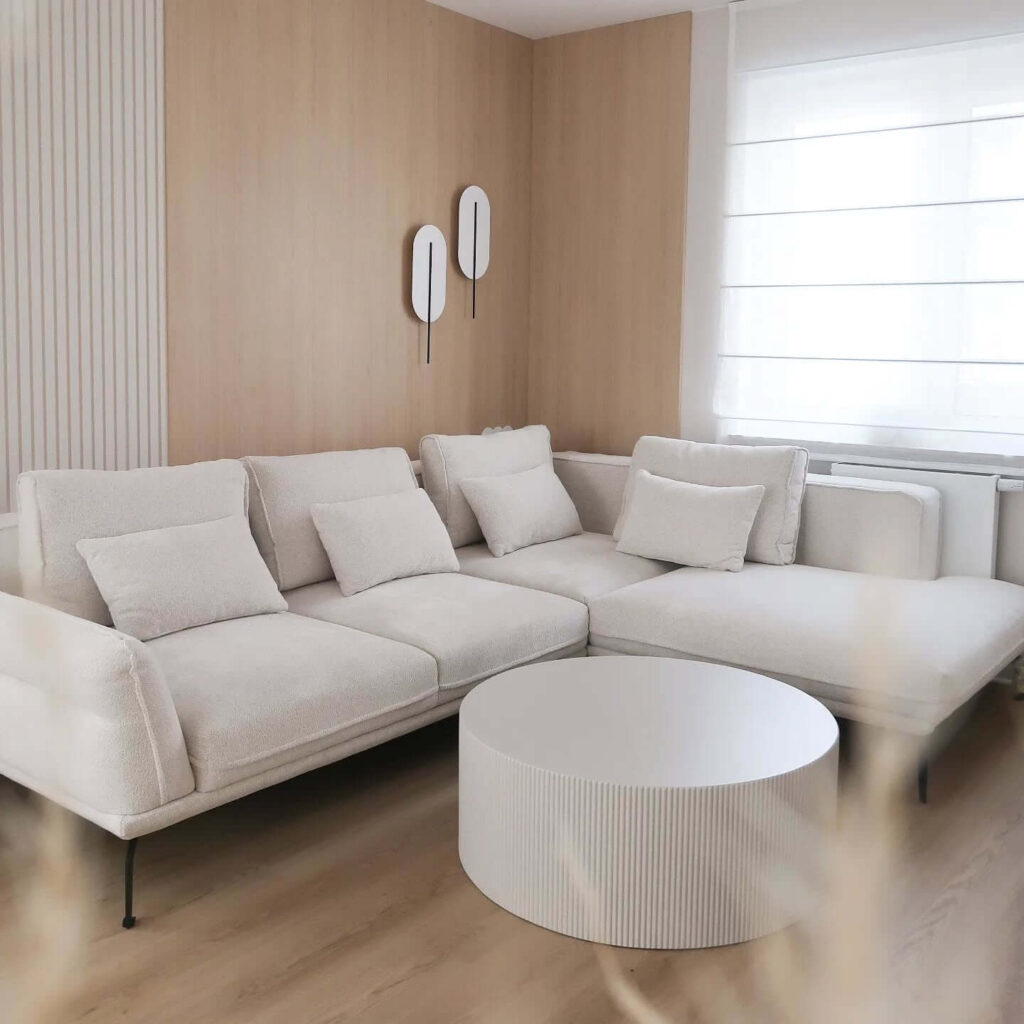
The Japandi aesthetic thrives on natural tones that evoke calm, and this living room showcases that beautifully. The warm beige sofa, textured jute rug, and wooden accents create a grounded, tranquil atmosphere. Muted earth tones are key in Japandi design—they pull in nature’s palette while avoiding visual clutter. This setup encourages mindfulness, making your living room feel like a serene retreat. Pairing neutral walls with raw wood furniture also adds a touch of wabi-sabi, the Japanese philosophy of finding beauty in imperfection.
2. Sculptural Lighting as a Minimalist Statement
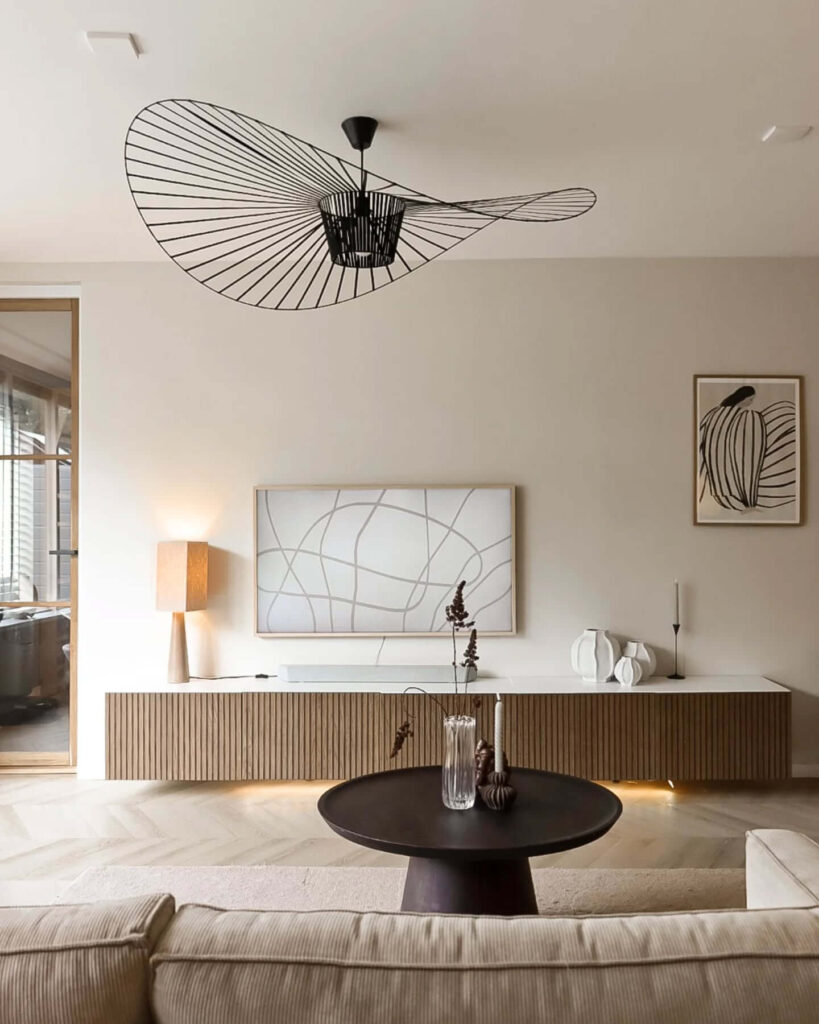
Lighting isn’t just functional in Japandi design—it’s an art form. This image highlights how a sculptural pendant light can double as a design statement without overwhelming the space. Its soft curves and matte texture align with both Scandinavian simplicity and Japanese craftsmanship. Strategically placed lighting in Japandi interiors emphasizes atmosphere, not just brightness. Opt for warm-toned bulbs and consider using pendant or floor lamps that look like objects of art while providing soft illumination.
3. Low-Slung Furniture That Embraces Stillness
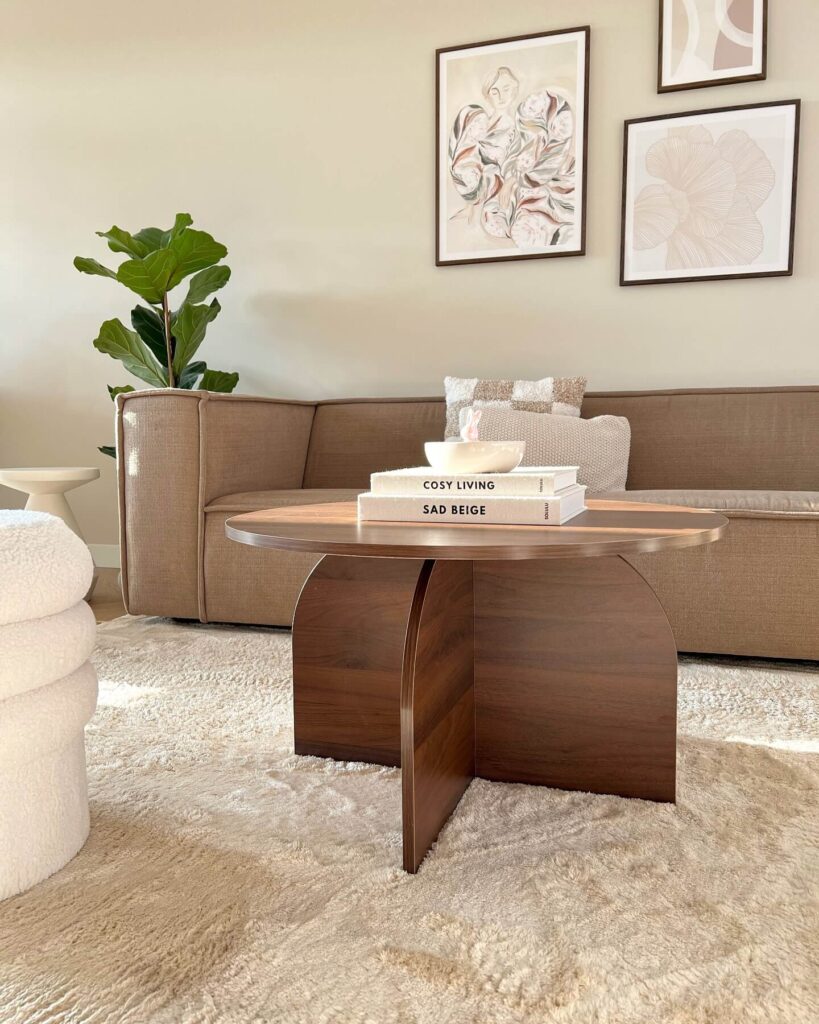
A key element of Japandi design is low-profile furniture, and this living room gets it just right. The low sofa, minimalist coffee table, and streamlined layout help create a grounded feeling—both literally and emotionally. Inspired by traditional Japanese floor seating and Nordic functionality, this approach promotes a sense of calm and connection to the space. It also helps to open up vertical space, making even smaller living rooms feel taller and more breathable.
4. Open Shelving with Intentional Decor
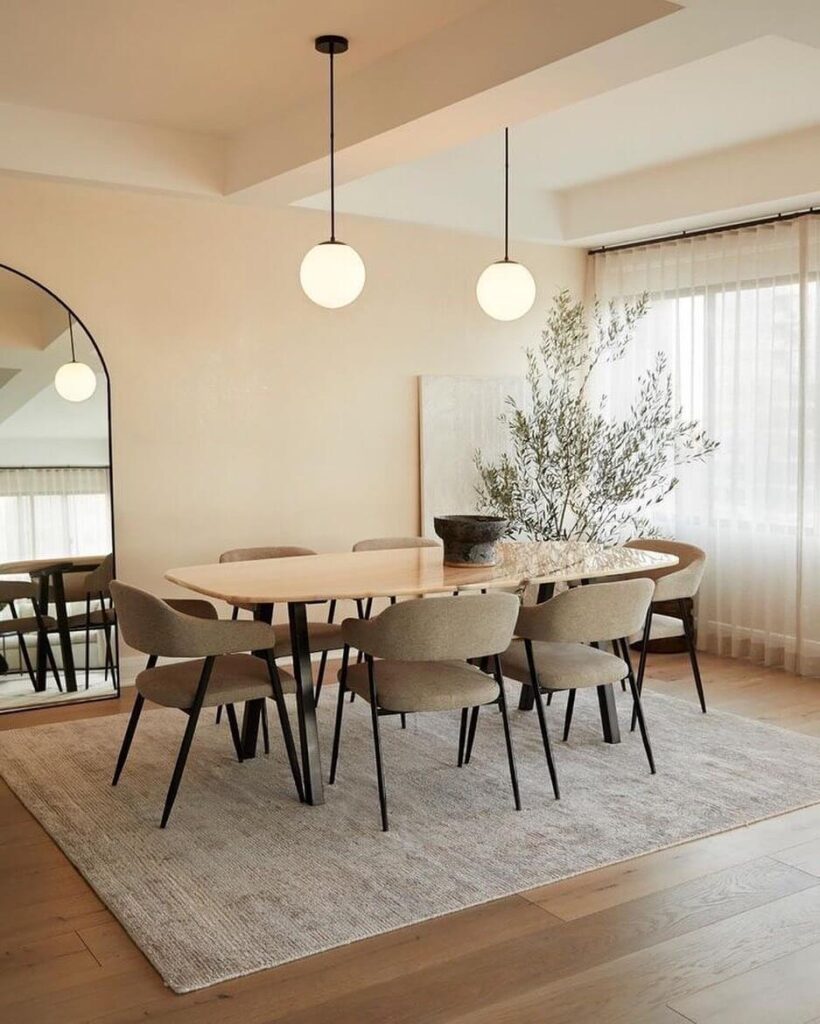
Japandi interiors reject clutter—but they don’t shy away from decor. This image demonstrates how open shelving can be both functional and beautiful when styled intentionally. A mix of handmade ceramics, neutral-toned books, and organic shapes keeps the display balanced and aligned with Japandi’s “less but better” philosophy. The key is to curate rather than fill—each item should feel like it belongs, adding quiet character without distraction.
5. Natural Materials That Speak Softly
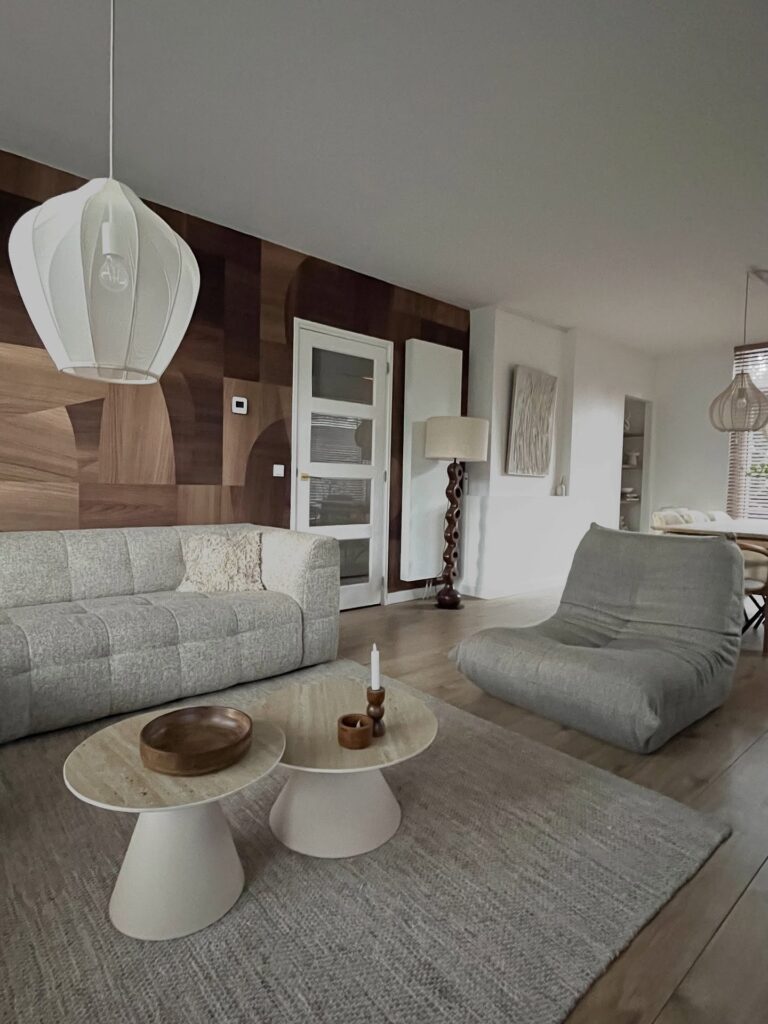
Raw wood, linen, and stone are staples in Japandi spaces, and this living room layers them effortlessly. The woven rug and wooden table bring texture and warmth, while a linen sofa adds softness and understated luxury. Japandi favors materials that age gracefully and tell a story over time. Choosing furniture and decor made of natural, sustainable materials not only aligns with eco-conscious living but also reinforces the design’s soothing, grounded aesthetic.
6. Soft Textiles for a Sense of Hygge and Harmony
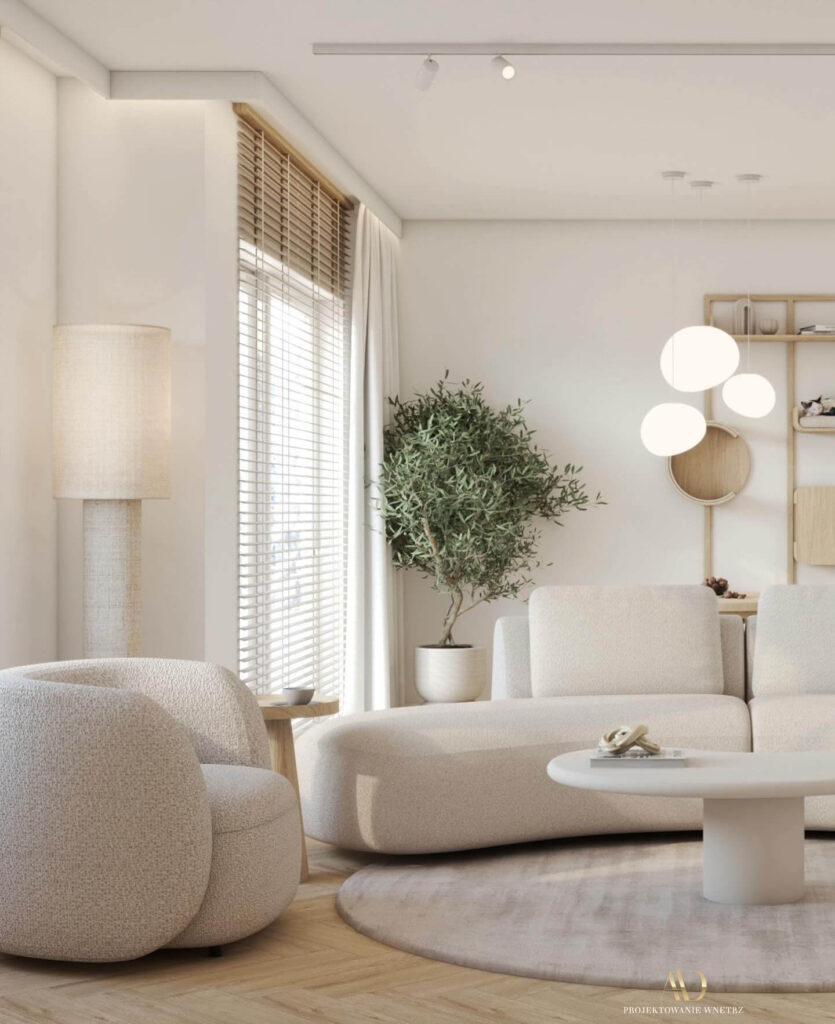
Textiles play a subtle yet powerful role in Japandi design, bringing softness and warmth to otherwise minimal spaces. This living room layers cozy throws, tactile cushions, and a neutral-toned rug to create a lived-in feel without compromising on minimalism. The use of subdued tones and natural fabrics like cotton, linen, and wool aligns perfectly with the Japandi principle of comfort through simplicity. These soft accents invite relaxation while maintaining the clean aesthetic that defines the style.
7. Indoor Greenery That Complements, Not Clutters
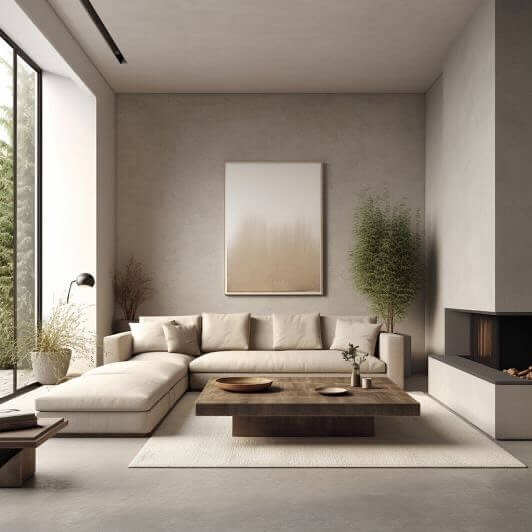
Biophilic touches are essential in Japandi interiors, and this space proves how a few well-placed plants can elevate the entire room. The minimalist greenery—like a single potted tree or trailing vine—adds life and movement without overwhelming the design. In Japandi spaces, plants are treated as sculptural elements, chosen for their form and integration with the room’s natural materials. This subtle connection to nature reinforces the calming, organic ambiance that Japandi is known for.
8. Neutral Layers That Feel Effortlessly Curated
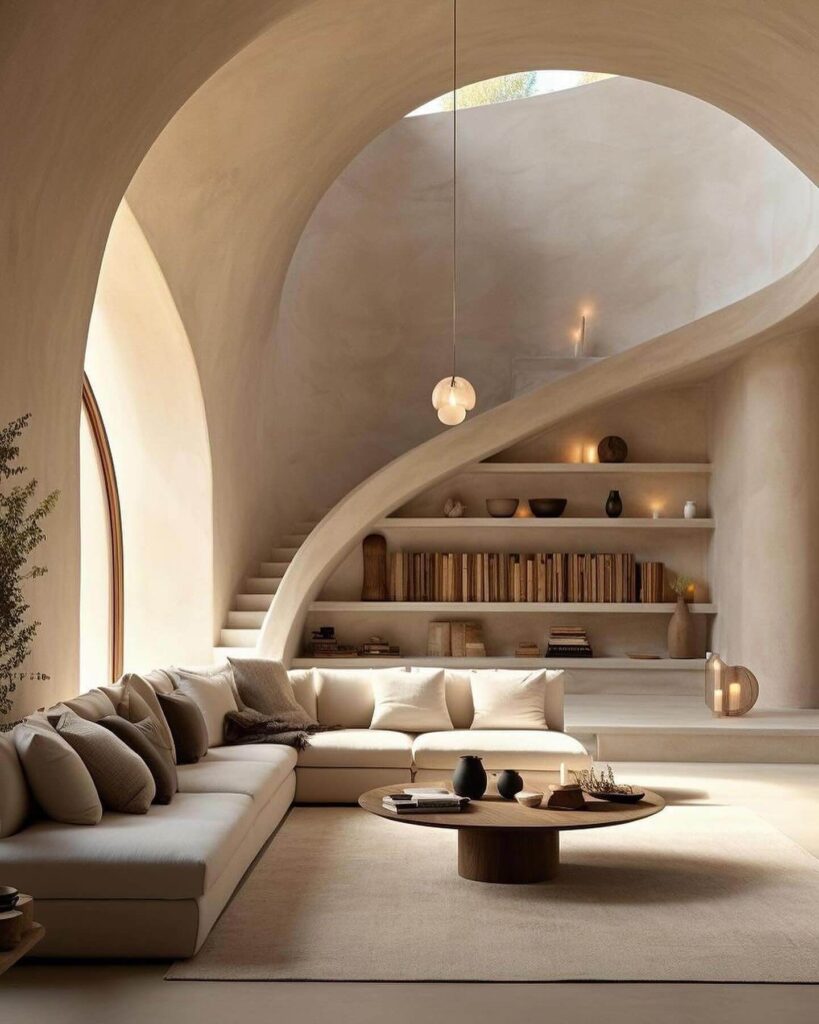
This living room highlights the art of layering neutral tones, from soft whites to warm taupes and greys, without feeling cold or bland. The trick is in mixing textures—think boucle, woodgrain, and matte finishes—so that even a monochromatic palette feels dynamic. Japandi interiors are never flashy; instead, they whisper elegance through thoughtful composition. This approach ensures your living room feels cohesive, airy, and effortlessly stylish.
9. Functional Decor That Blends Beauty and Use
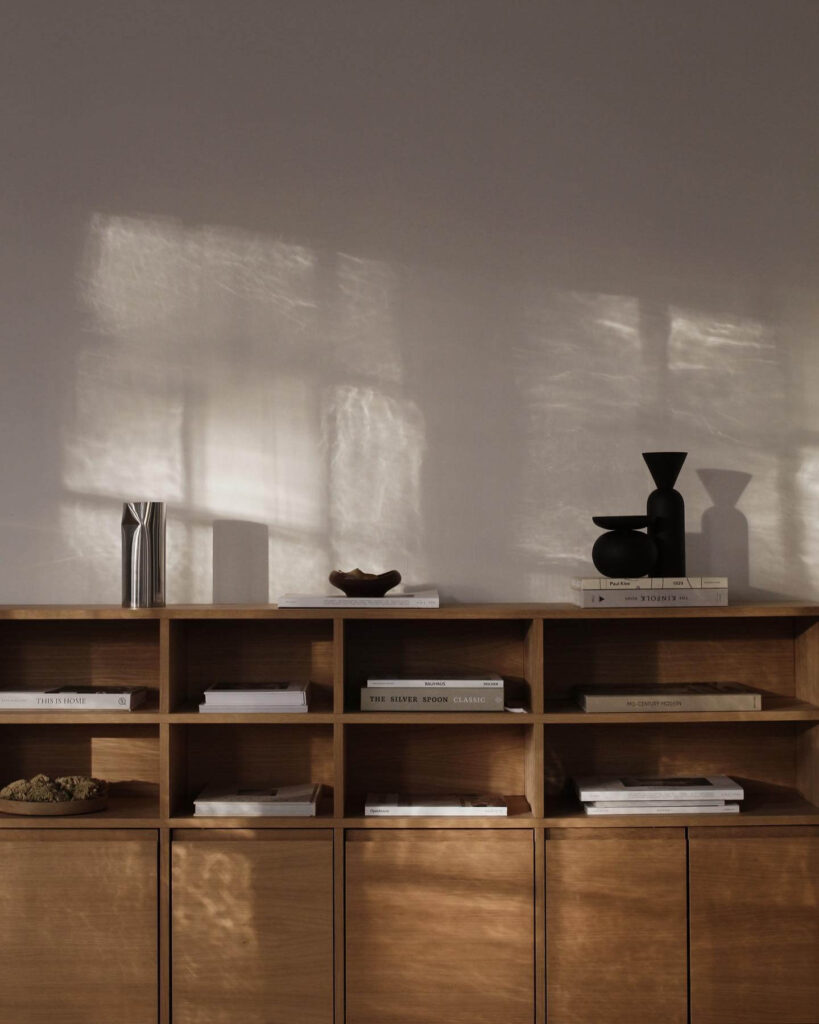
Japandi design avoids purely decorative clutter, opting instead for pieces that serve a purpose while still looking beautiful. In this living room, every item—be it a tray, a stack of books, or a ceramic bowl—feels intentional. This kind of functional decor aligns with both Scandinavian practicality and Japanese thoughtfulness. Choosing dual-purpose pieces enhances the utility of your space while keeping it visually harmonious and serene.
10. Architectural Simplicity with an Inviting Mood
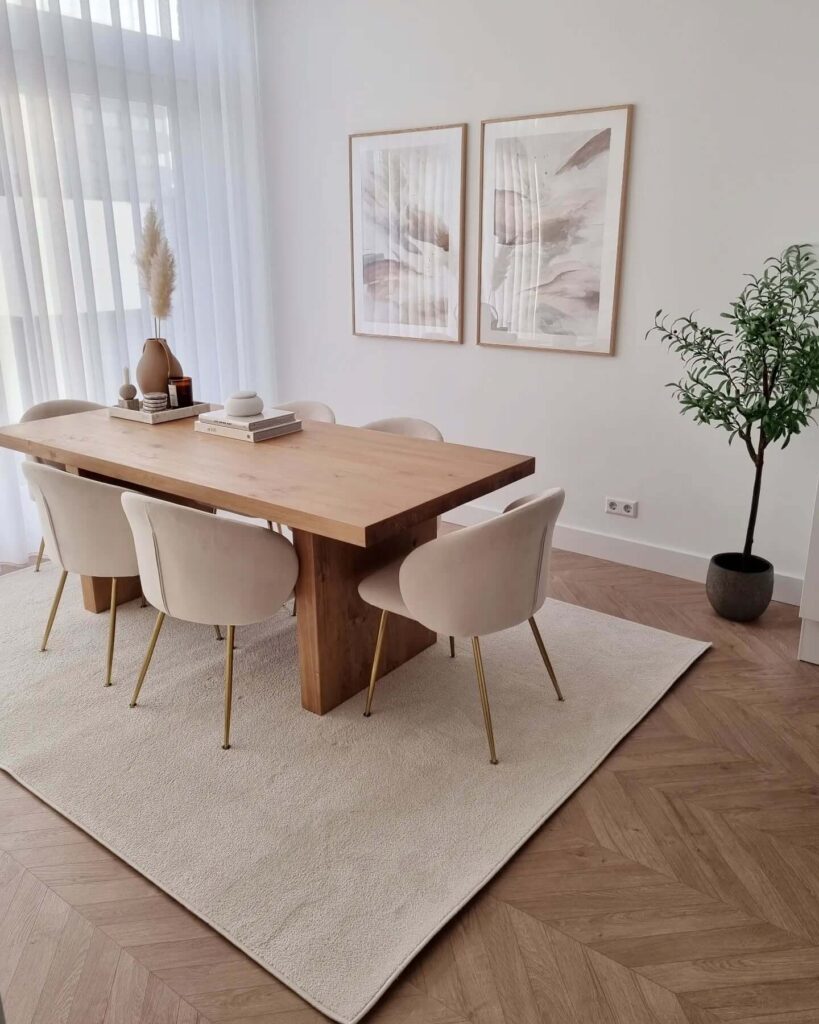
Architectural lines play a crucial role in Japandi design, and this room demonstrates how clean structures can still feel warm and inviting. From the linear paneling to the soft curves of the furniture, this space balances form and feeling. The simplicity of the layout allows the natural materials and subtle contrasts to shine. This architectural restraint creates a sense of order that invites relaxation and mindful living—a true hallmark of the Japandi style.
11. Open Layouts That Encourage Calm and Clarity
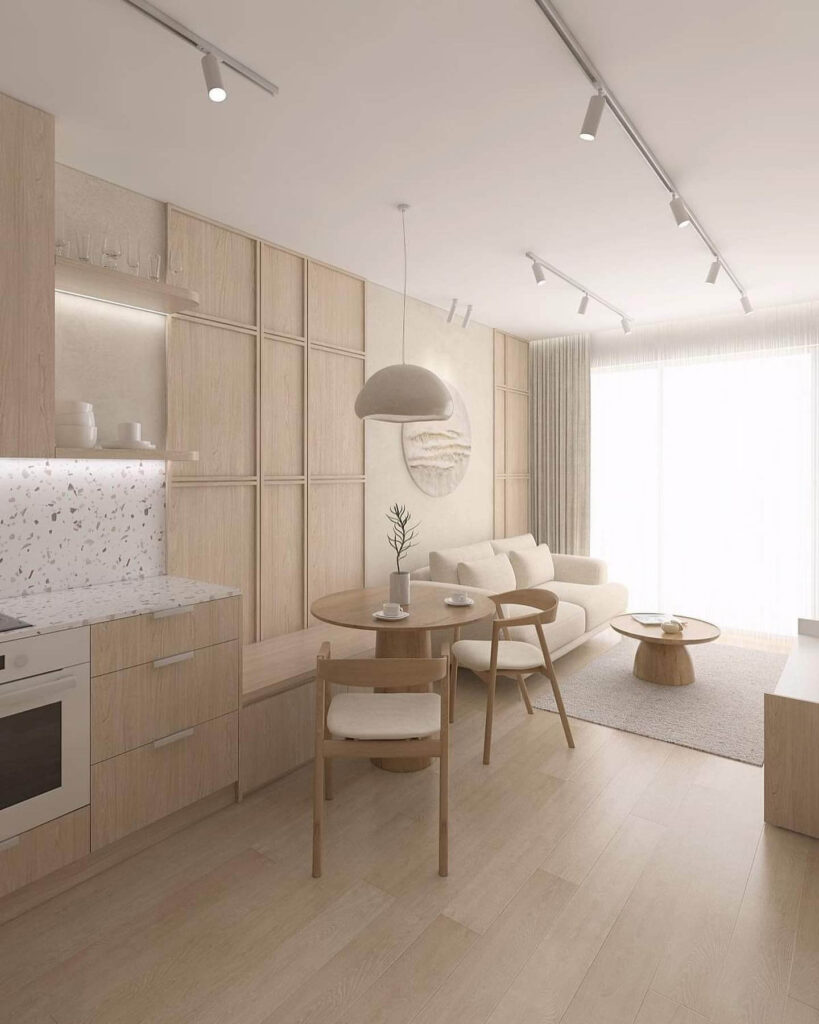
A defining trait of Japandi living rooms is their open, uncluttered layouts. This space embraces negative space as a design element, allowing furniture to breathe and light to move freely. By limiting furniture to the essentials and spacing pieces intentionally, the room fosters a feeling of openness and tranquility. This minimalist planning not only aligns with Japandi principles but also enhances functionality and focus, making the living area feel both calming and purposeful.
12. The Beauty of Imperfection with Wabi-Sabi Touches
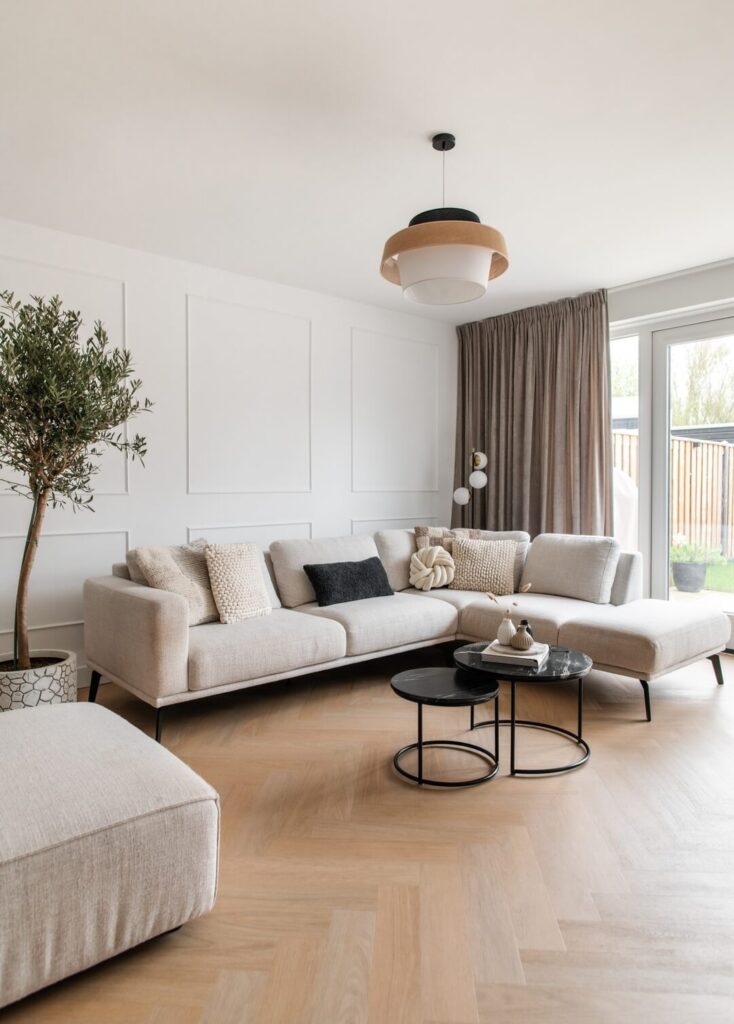
This image captures the spirit of wabi-sabi—the Japanese concept of embracing imperfection—through organic textures and asymmetrical decor. From the uneven grain of the wooden table to handcrafted pottery and worn-in textiles, each detail adds soul to the space. In Japandi design, perfection isn’t the goal; authenticity is. These subtle imperfections bring character and depth, making the living room feel personal and timeless rather than sterile or overstyled.
13. Framed Views and the Art of Letting Nature In
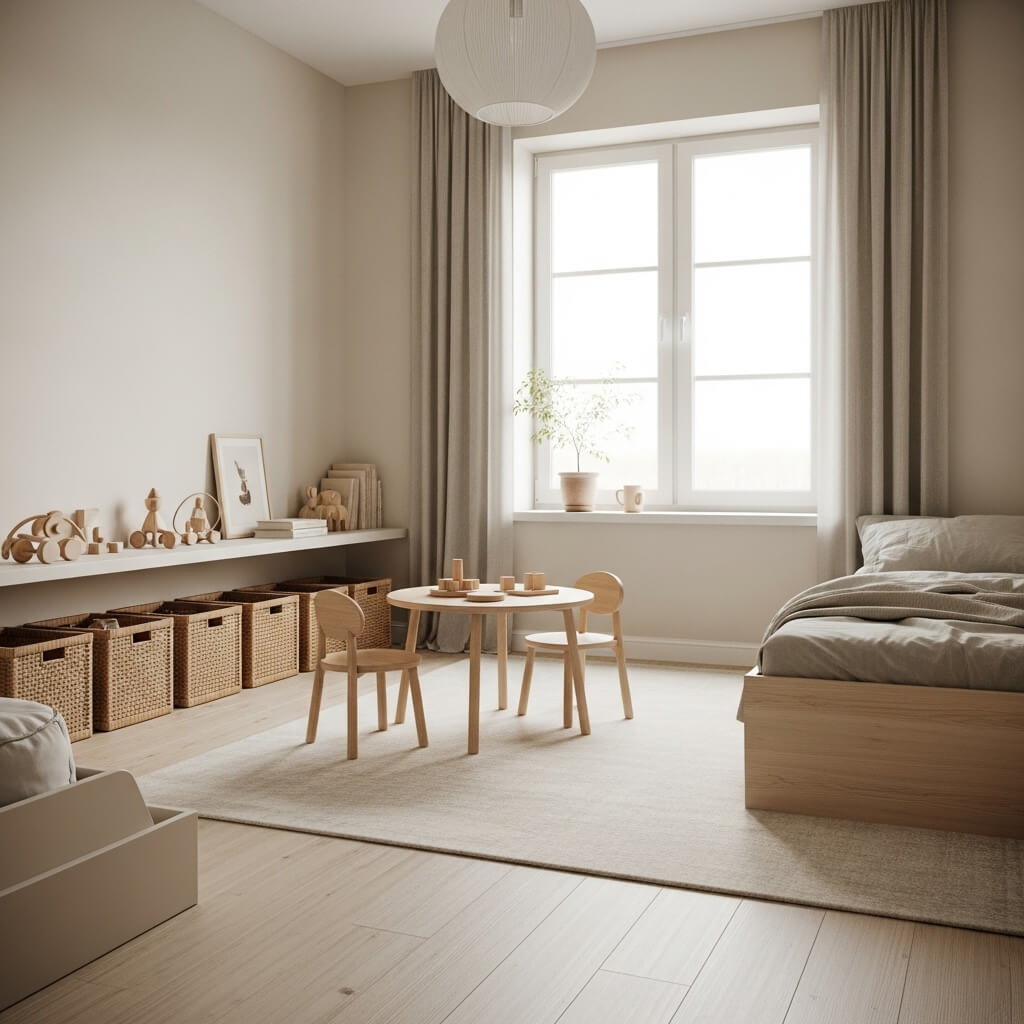
This living room demonstrates how Japandi design connects interior spaces with the outside world. Large windows frame natural views, acting like living artwork while flooding the room with soft, natural light. The clean lines and low-profile furniture don’t compete with the view—they enhance it. Integrating outdoor elements into the design, even visually, strengthens the bond between home and nature, which is central to Japandi philosophy.
14. Matte Finishes That Soothe the Senses
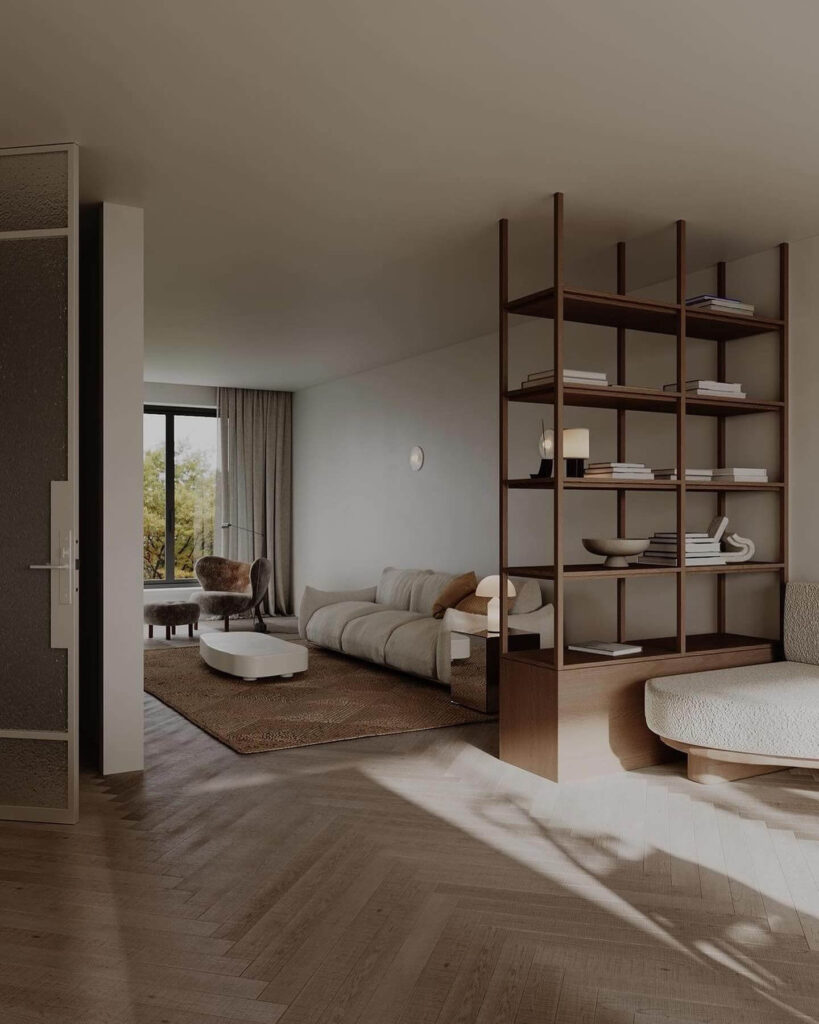
In Japandi interiors, shine and gloss take a backseat to matte textures that absorb light and add visual softness. This room illustrates how matte finishes—on walls, furniture, and decor—can create a more grounded, sensory-friendly environment. Whether it’s a chalky wall tone or a ceramic vase, these tactile surfaces calm the eye and enhance the overall serenity of the space. They also pair beautifully with raw wood and stone for a cohesive, earthy look.
15. Balanced Symmetry with a Human Touch
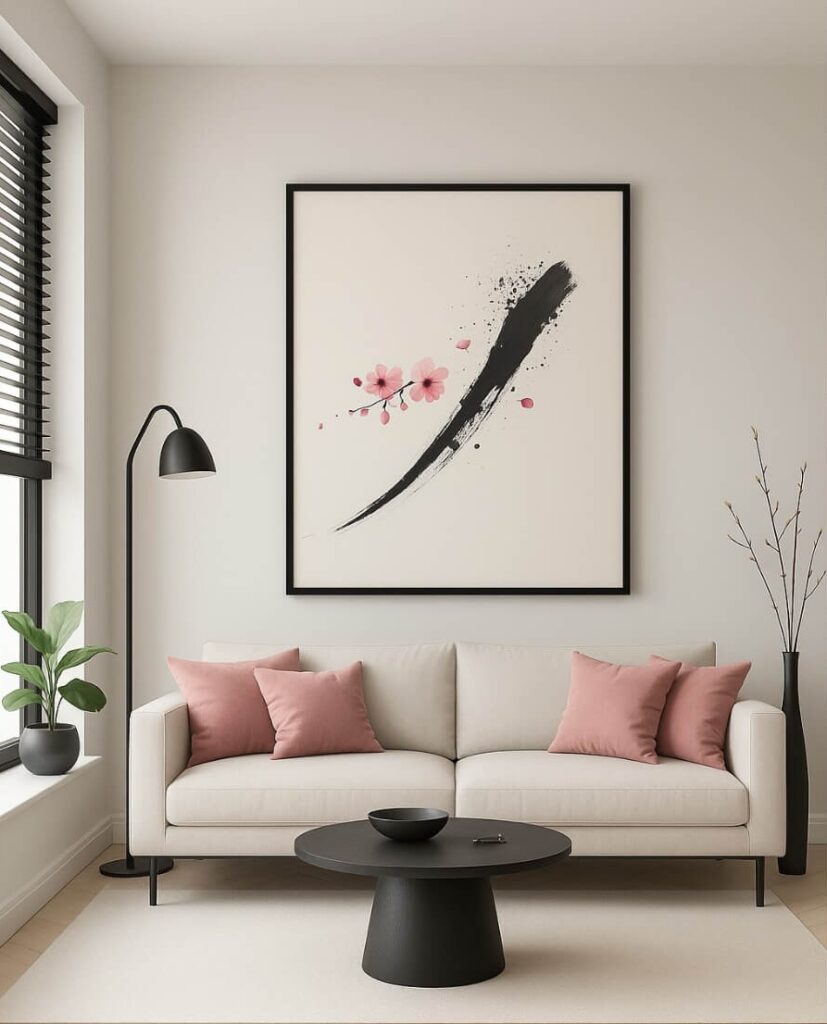
While Japandi interiors favor simplicity, they also thrive on quiet balance. This living room achieves symmetry without feeling rigid, thanks to a harmonious layout and repeated forms—like matching chairs, centered lighting, or mirrored shelving. The look feels deliberate but never cold, with natural materials and personal touches softening the structure. This blend of order and warmth creates a sense of quiet rhythm, inviting you to slow down and enjoy the space.
16. Layered Lighting for Depth and Atmosphere
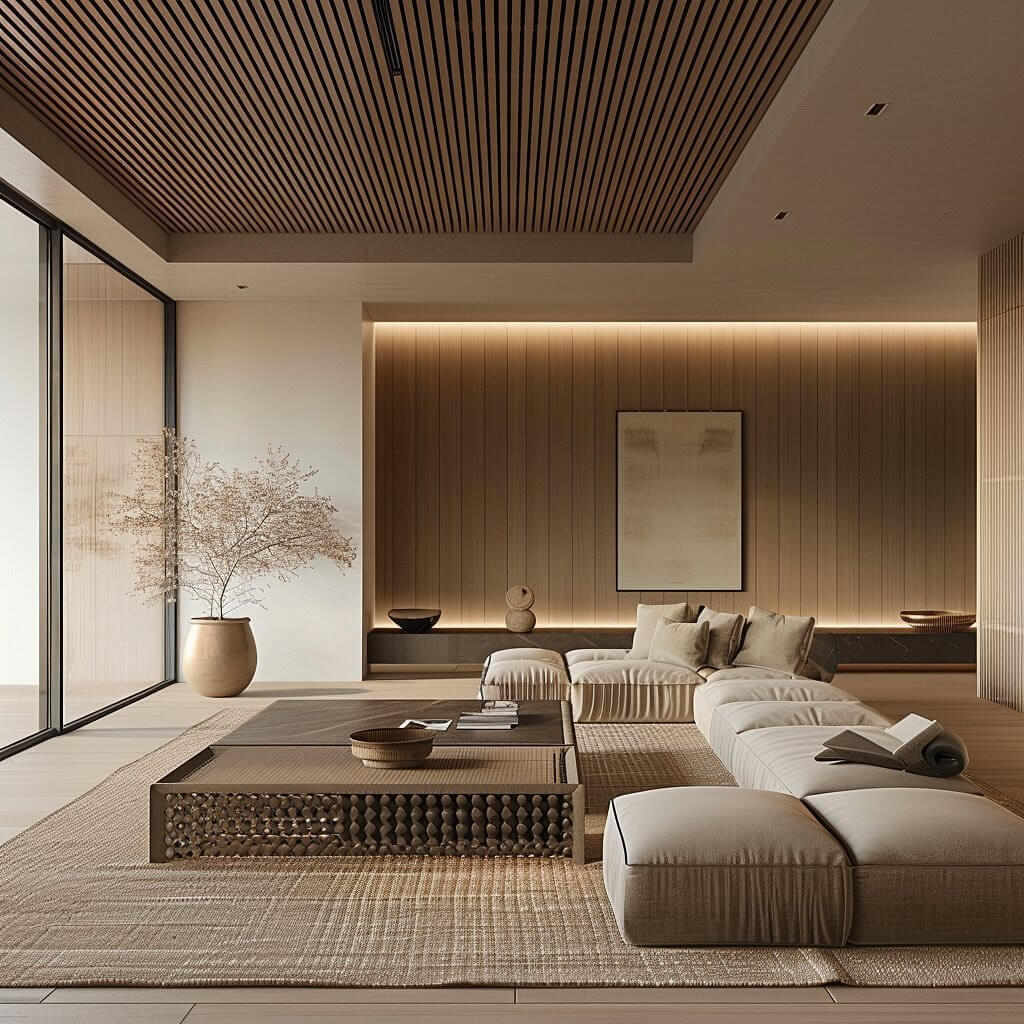
Japandi interiors embrace layered lighting to enhance mood and functionality. This space uses a combination of ambient ceiling lights, sculptural floor lamps, and soft wall sconces to create a warm, inviting glow. Rather than relying on harsh overhead lighting, the design leans into multiple light sources that offer both visual interest and cozy ambiance. This multi-layered approach helps define zones within the room while supporting the tranquil, restful vibe central to Japandi style.
17. Monochrome Minimalism with Natural Contrast
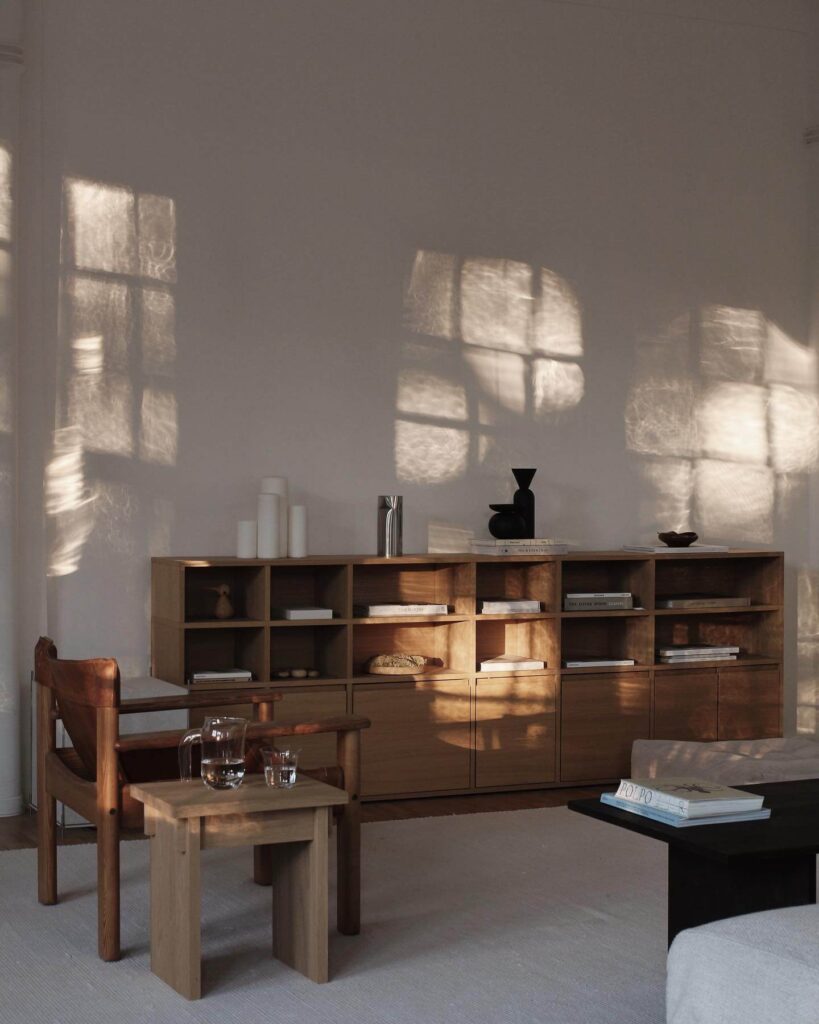
This living room proves that minimalism doesn’t have to be stark or cold. By focusing on a limited monochrome palette—like black, white, and warm taupe—then softening it with organic textures, the space maintains both structure and warmth. Japandi design favors this kind of visual restraint, allowing materials like wood, wool, and stone to take center stage. The contrast feels deliberate yet calming, elevating the room without overwhelming the senses.
18. Built-In Features for Seamless Functionality
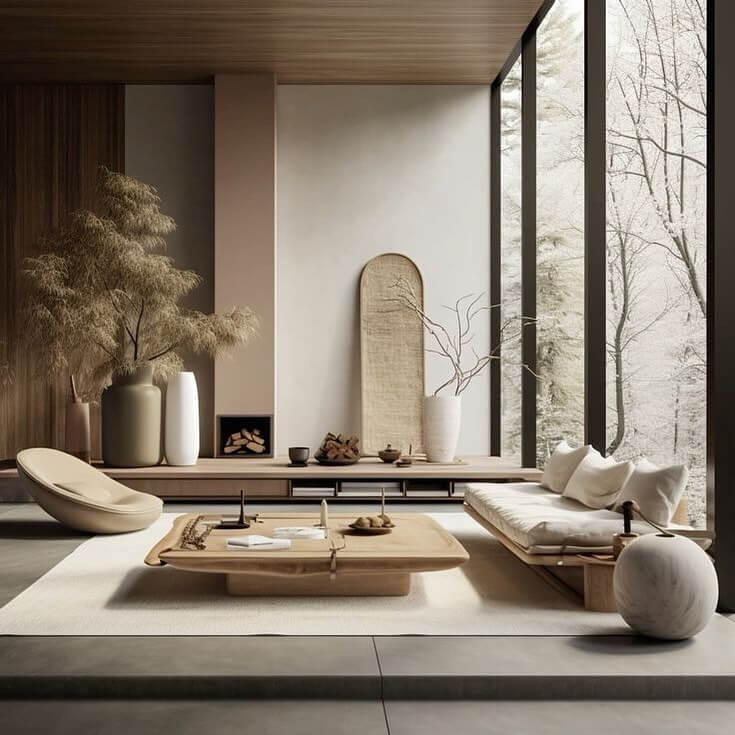
This image showcases how built-in elements—like shelving, cabinetry, or seating—can streamline the look of a Japandi living room. Integrated storage and architectural elements help eliminate visual clutter while maximizing utility. Clean lines, recessed lighting, and flush finishes all contribute to a seamless aesthetic. Built-ins are ideal for maintaining the minimalist ethos of Japandi design without sacrificing comfort or practicality, especially in compact or multi-use spaces.
19. Minimalist Art That Enhances Without Distracting
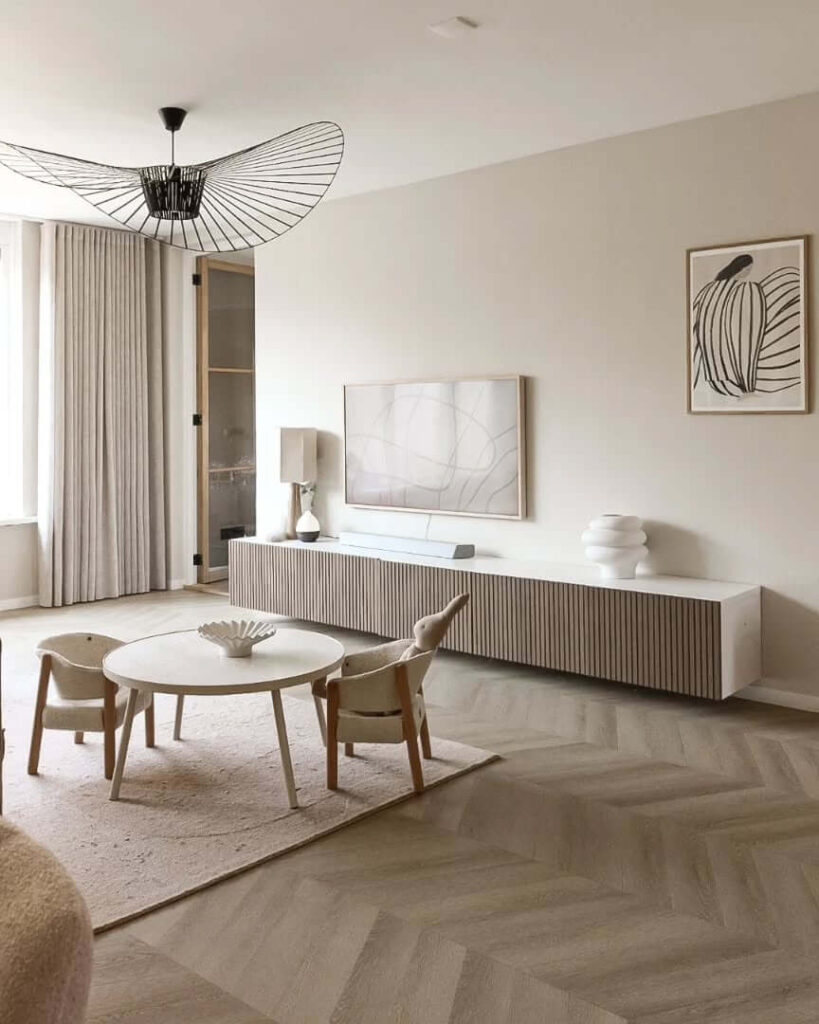
Art in a Japandi space is never loud—it’s purposeful. This room features minimalist artwork that adds visual interest while maintaining a sense of calm. Whether it’s a single abstract print, a brushstroke painting, or a textured wall hanging, each piece complements the space rather than dominating it. Japandi decor leans into the idea that art should evoke thoughtfulness and emotion, not distraction, helping your living room feel curated but never chaotic.
Thoughtful Living: Questions About Japandi Style
How is Japandi different from minimalist design?
While both emphasize simplicity, Japandi design combines the minimalism of Japan with Scandinavian warmth and coziness. It prioritizes functionality, natural textures, and emotional comfort.
What colors define the Japandi aesthetic?
Neutral tones like beige, white, gray, and soft earth shades dominate Japandi interiors. Accents of muted green, terracotta, or charcoal add depth without disrupting the calm balance.
Can I mix modern furniture with Japandi decor?
Yes, as long as the furniture maintains clean lines and a neutral palette. Pair modern pieces with natural materials and simple accessories for a cohesive look.
What’s the easiest way to bring Japandi style into my home?
Start with decluttering and choosing natural materials. Add soft lighting, earthy tones, and a few handcrafted elements to instantly evoke Japandi calmness.
Final Verdict: Creating Calm Through Japandi Living Room Design
Japandi design is more than just a passing trend—it’s a timeless approach to living that merges the best of two worlds: the clean, intentional beauty of Japanese minimalism and the cozy, functional warmth of Scandinavian design. In the living room, this fusion creates a space that’s not only visually calming but also emotionally grounding.
Whether you’re drawn to neutral palettes, natural materials, or simply the idea of living with less but better, Japandi offers a blueprint for mindful interiors. By embracing simplicity, quality craftsmanship, and a connection to nature, you can create a living room that feels like a true retreat—peaceful, purposeful, and beautifully balanced.
Start small with key Japandi elements like low-profile furniture, muted tones, and layered textures. Then build upon that foundation with intentional decor, soft lighting, and pieces that prioritize both form and function. With Japandi, every item in your living room tells a story—quietly, elegantly, and meaningfully.
